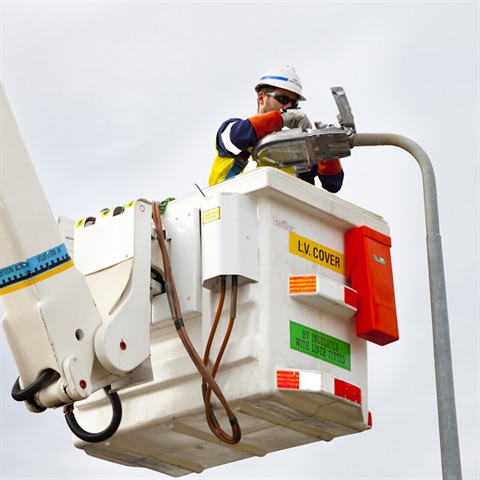Lighting the Regions

Image source: Ironbark Sustainability
Lighting the Regions Stage 2
The Lighting the Regions Stage 2 project saw the replacement of more than 1,700 street lights with energy efficient LEDs across the Mildura local government area during 2022 and 2023
Street lights were upgraded in areas including Cabarita, Cardross, Cullulleraine, Irymple, Koorlong, Merbein, Meringur, Mildura, Murrayville, Nichols Point, Ouyen and Red Cliffs.
The majority of the street lights replaced were along major roads. Most lights on residential streets were replaced in 2015 during stage one of Lighting the Regions.
What is Lighting the Regions?
Lighting the Regions Stage 2 was a partnership between 10 Victorian Councils, the Central Victorian Greenhouse Alliance, the Victorian Government and Ironbark Sustainability. The regional project involved replacing almost 11,000 street lights to more energy-efficient LEDs.
What are the benefits of replacing lights?
All street lights within the Mildura local government area where Mildura Rural City Council pays fully or partly the operational and maintenance costs have now been converted to LED technology, cutting Council’s energy and maintenance costs by a further $2.5 million over the next 20 years.
More than 1,700 street lights were replaced across the Mildura region, reducing Council’s annual electricity use by 544 megawatt hours.
In addition to the cost savings and environmental benefits, the new LED street lights are more reliable, provide more consistent lighting and better visibility than the technologies they replaced.
How will the lights be powered?
Mildura Rural City Council signed on to the largest ever Power Purchase Agreement by local government in Australia in 2021, the Victorian Energy Collaboration. All of our street lighting has been powered by 100% renewable energy since 1 July 2021 in line with our Towards Zero Emissions Strategy 2021-2050.
Why did the councils choose these particular lights?
The LED lights were selected by the councils based on energy and cost efficiency, and suitability from the selection of products approved for use by Powercor (the Distribution Network Service Provider that owns the lighting infrastructure across the region).
The lights have been tested to ensure they meet relevant Australian Standards for safety and light levels.
The new lights have:
- Greater uniformity of light across and along the street
- Better colour rendering and visibility
- Less depreciation of light output over time
- Less glare
- Lower maintenance costs
Who installed the new lights?
Powercor and its sub-contractor Omexom installed the new LEDs with oversight from Ironbark Sustainability. They liaised with Mildura Rural City Council throughout the project.
Who makes the lights?
The lights were made by Sylvania-Schreder Lighting and were assembled in Australia.
How long do the lights last?
The luminaire (the main body of the light including the LED light source) will last about 20 years, as will the LED chips.
Who actually owns the lights?
The lights are owned and maintained by Powercor.
Were the old lights recycled?
Yes. The recycling of the old street lights taken down during the project was the responsibility of the installer. The tender for the replacement of lights specified waste disposal requirements, which included the recycling of around 98% of the old lights. For example, the glass collected is recycled into products such as glass wool insulation for homes. The mercury is distilled and reused in the dental industry to manufacture amalgam. The aluminium body and other fixed components (for example, steel screws and copper wires) end up as ingots used in industry.
Who funded the project?
The $2.2million Mildura Lighting the Regions project was largely funded by the Australian Government through $1.63 million in Department of Infrastructure, Transport, Regional Development and Communications Local Roads and Community Infrastructure Program funding. Mildura Rural City Council contributed almost $600,000 from its capital works program towards the project.